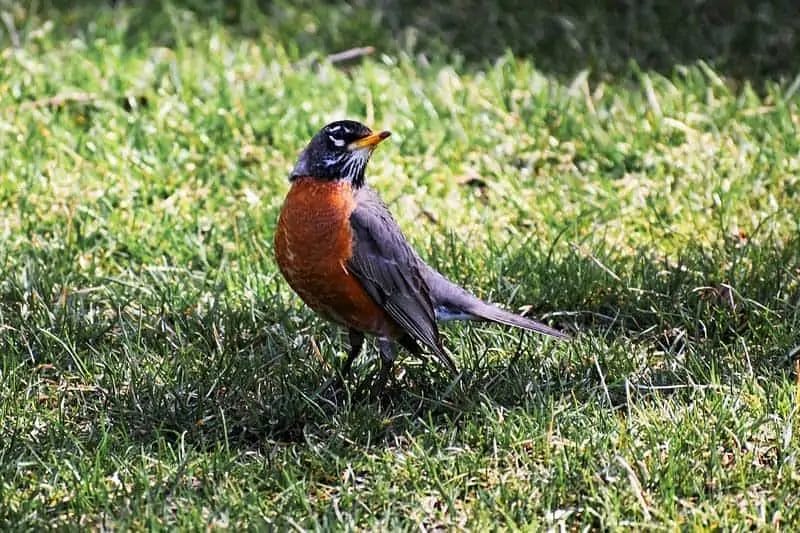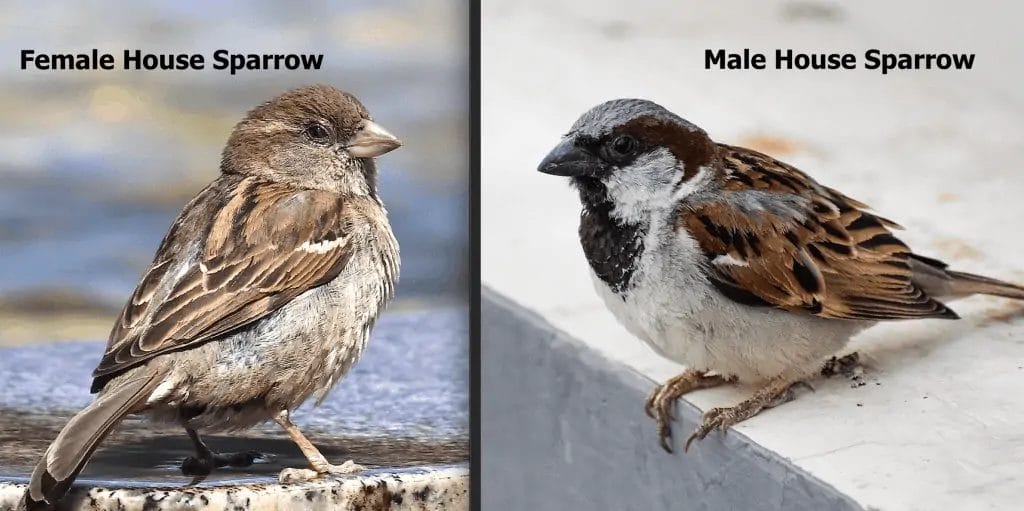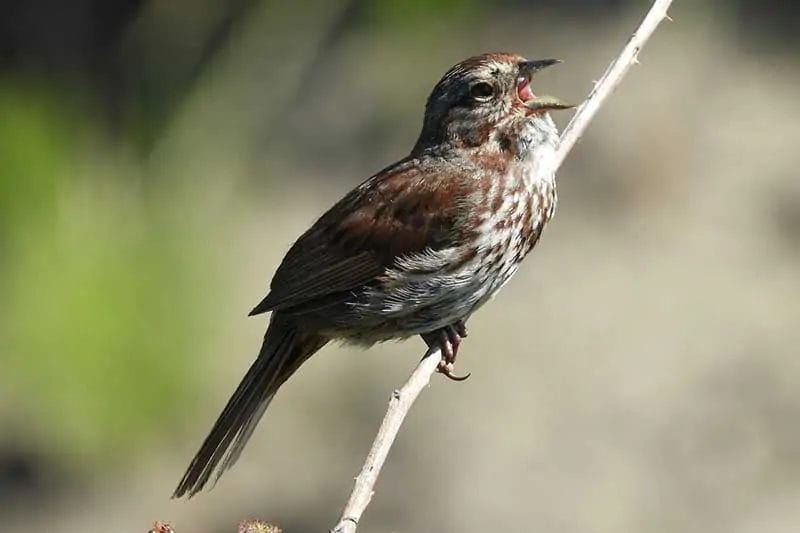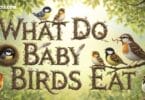Birds In Tennessee Top17 Birds With Facts
Tennessee is home to many different species of wild birds. In this articlewe’ll take a look at some of the more recognizable and well-known birds found in the state. Some of these species live in Tennessee year-round, while others are migratory and only part-time residents of the volunteer state. In this article, we’re going to take a look at 25 backyard birds in Tennessee and learn a little about each species.
After that, I’ll show you how to attract them to your yard, give you a crash course in the 10 different types of bird feeders you can use to do so, and even mention a few Tennessee birdwatching hotspots.
1. NORTHERN CARDINAL

birds of Tennessee
Scientific name: Cardinalis cardinalis
Length: 8.3-9.1 in
Weight: 1.5-1.7 oz
Wingspan: 9.8-12.2 in
Northern Cardinals are among the most recognizable and common backyard birds in North America. Males have bright red feathers and a black mask, females have duller colors and are more pale tawny brown with some reddish coloring. Both males and females are easily recognized by their “mohawks” and reddish orange beaks.
Northern Cardinals are found throughout the state year-round.
Cardinals will visit most seed feeders, and offer them mixed seed blends and black sunflower seeds.
2. TUFTED TITMOUSE

birds of tnbirds of east tennessee
Scientific name: Baeolophus bicolor
Length: 5.5-6.3 in
Weight: 0.6-0.9 oz
Wingspan: 7.9-10.2 in
These little birds are very common at feeders and in backyards within their range. Like Cardinals, they have a small crest (the “mohawk”) that helps you tell them apart from other birds. Both male and female Titmice are silver-gray on top and lighter on the bottom, with a black patch just above their beaks.
The Tufted Titmouse is found throughout the state of Tennessee all year.
Titmice will readily visit most seed feeders, offer them mixed seed blends and black sunflower seeds.
3. CAROLINA CHICKADEE

hummingbirds in tennessee
Scientific name: Poecile carolinensis
Length: 3.9-4.7 in
Weight: 0.3-0.4 oz
Wingspan: 5.9-7.9 in
Chickadees are tiny little birds that are very easy to recognize because of their “black cap” and black bib. Their cheeks are solid white, their wings and backs are blackish gray, and their underbodies are puffy and whitish.
Carolina Chickadees, not to be confused with their nearly identical neighbors to the north Black-Capped Chickadees, are found throughout the state of Tennessee. They are very common at bird feeders and are often seen darting back and forth from a feeder to cover and back again for more. Chickadees are always among the first birds I see visiting a new feeder in my yard.
Chickadees will visit most seed feeders, and offer them mixed seed blends and black sunflower seeds.
4. BLUE JAY

blue birds of tennessee
Scientific name: Cyanocitta cristata
Length: 9.8-11.8 in
Weight: 2.5-3.5 oz
Wingspan: 13.4-16.9 in
Another very well-known bird species in North America and the U.S. is the Blue Jay. They have a large blue crest on top of their heads with mostly blue feathers on top and white feathers on the bottom. They also have a black ring around their necks that looks like a necklace. Their wings are barred white, blue, and black. They can be quite loud and their chirps sometimes have a metallic sound to them. They are also quite good at impersonating the calls of hawks.
Blue Jays are another year-round resident of the entire state of Tennessee. They are common in backyards and at feeders.
Blue Jays like platform feeders, peanut feeders, and feeders with large perches. Offer them black sunflower seeds, mixed seeds, and peanuts.
5. EASTERN BLUEBIRD

yellow birds of Tennessee
Scientific name: Sialia sialis
Length: 6.3-8.3 in
Weight: 1.0-1.1 oz
Wingspan: 9.8-12.6 in
True to their name, bluebirds are all blue on top with rusty reddish-orange bellies. They are just about the most sought-after tenants of birdhouses in the U.S. making the bluebird house industry pretty booming. They are very common in backyards, though not so much at feeders. Put up a birdhouse and try your luck in attracting a mating pair, I was able to with this birdhouse on Amazon.
The Eastern Bluebird is a year-round resident of Tennessee. You are most likely to see bluebird activity in the spring months, and if you are putting up a birdhouse make sure it is ready in February or March.
Bluebirds don’t typically eat seeds but can be enticed to visit feeders with mealworms or suet nuggets on a tray feeder or in a dish.
6. WHITE-BREASTED NUTHATCH

birds of middle Tennessee
Scientific name: Sitta carolinensis
Length: 5.1-5.5 in
Weight: 0.6-1.1 oz
Wingspan: 7.9-10.6 in
White-breasted Nuthatches are very common feeder birds found in most backyards within their range. They get their name from the fact that they stuff nuts and seeds under tree bark, then use their sharp beaks to hatch them back out. I’ve noticed that they also have the ability to walk vertically on trees better than many other types of birds. They have a thick black stripe on top of their heads, with white on either side and their bellies. Their wings are mostly gray and black.
White-breasted Nuthatches are found year-round throughout Tennessee.
Nuthatches will visit most seed feeders, and offer them mixed seed blends, black sunflower seeds, peanuts, or suet. They usually like to grab and run, taking a seed and immediately flying off to eat it or cache it in a nearby tree.
7. AMERICAN ROBIN

birds of prey in tennessee
Scientific name: Turdus migratorius
Length: 7.9-11.0 in
Weight: 2.7-3.0 oz
Wingspan: 12.2-15.8 in
Highly common in backyards, Robins are mostly seen hopping around the grass looking for worms and other invertebrates to eat. While they will occasionally visit bird feeders, they do not typically eat seeds. Their bright red, round bellies, and yellow beaks make them easy to identify.
Robins live all year in Tennessee, although you may see them less frequently in your yard during the winter.
American Robins do not often visit bird feeders, so attract them with mealworms, native fruit-bearing plants, leaf litter for foraging, or a bird bath.
8. MOURNING DOVE

tennessee birds of prey
Scientific name: Zenaida macroura
Length: 9.1-13.4 in
Weight: 3.0-6.0 oz
Wingspan: 17.7 in
About the size of a robin, doves are very common in backyards and will often sit perched on telephone wires or in groups in trees. I sometimes see them on my tray feeder, but more often they like to hang out underneath feeders and pick up the seeds that fall to the ground. Mourning Doves are mostly gray with black spots on top and a pale peachy color below. They have a pale bluish-gray eye ring and pink legs.
Mourning Doves are found all year throughout Tennessee.
Doves will often visit seed feeders but prefer scouring the ground for seeds that have fallen. Try a ground feeder with a mixed seed blend, or simply scatter some seeds on the ground.
9. EUROPEAN STARLING

birds of prey tennessee birds of tennessee identification
Scientific name: Sturnus vulgaris
Length: 7.9-9.1 in
Weight: 2.1-3.4 oz
Wingspan: 12.2-15.8 in
100 starlings were set loose in New York in the 1890s and they have since taken over the country. They destroy other birds’ nests, kill their young, and will overtake feeders not allowing other birds to get any of the food that you put out. They are mostly all dark with white specks on their backs and wings and have yellow beaks and feet. While Starlings often look black, they are iridescent and in the right lighting can have pretty purple and green plumage.
Unfortunately, starlings are found in every one of the lower 48 states year-round, Tennessee included.
European Starlings will eat almost anything but are especially fond of suet. They are an invasive species so we suggest you do not attempt to attract them, they’ll show up anyway.
10. AMERICAN GOLDFINCH

backyard birds of tennessee
Scientific name: Spinus tristis
Length: 4.3-5.1 in
Weight: 0.4-0.7 oz
Wingspan: 7.5-8.7 in
Goldfinches are among my favorite birds to see at feeders, especially when they have their bright yellow feathers in the Spring and Summer. During this period breeding males become mostly yellow, or “gold”, with black-tipped wings and black caps on top of their heads. Females and juveniles are not as bright yellow and they lack the black cap. In the winter they will molt and lose these flashy colors and have more dull brownish or olive colors. You can always recognize them any time of year by the black on their wings, and their finch-like beaks.
Goldfinches are found all year in Tennessee.
Goldfinches prefer thistle feeders, they may also eat sunflower chips but a thistle feeder is your best chance to attract them.
11. HOUSE FINCH

water birds of tennessee
Scientific name: Haemorhous mexicanus
Length: 5.1-5.5 in
Weight: 0.6-0.9 oz
Wingspan: 7.9-9.8 in
The House Finch is yet another very common backyard bird in Tennessee. Though they are invasive to the eastern U.S., they are not universally hated like House Sparrows and do not cause the problems that the sparrows do. If you attract them, which is fairly easy to do, they may show up in large flocks and mob your feeders. Males are mostly streaked brown with some red on the head and chest, females are all brown.
House Finches are common all year throughout Tennessee.
Like other finches, House Finches often visit thistle feeders. They are seen at seed feeders more than Goldfinches, so try some black sunflower seeds to attract them as well.
12. HOUSE SPARROW

birds of tennessee book
Scientific name: Passer domesticus
Length: 5.9-6.7 in
Weight: 0.9-1.1 oz
Wingspan: 7.5-9.8 in
Generally looked at as pests, Houses Sparrows are the only other species of wild birds in the U.S. besides starlings that you can legally trap and humanely kill. Like starlings, they were introduced to the U.S. in New York in the 1800s and have since spread across our country like wildfire. They are mostly brown, with some black and brown streaking on their wings and buffy chest. They are overall aggressive towards other birds, especially around nests. They are known to evict other birds nesting in birdhouses.
House Sparrows are found throughout Tennessee, especially around areas of human activity. If you see drab brown birds hanging out around shopping areas and building nests inside of storefront signs, they are likely House Sparrows.
Like the European Starling, House Sparrows are invasive and pose a threat to native species. They will eat almost anything.
13. RED-WINGED BLACKBIRD

types of birds in tennessee
Scientific name: Agelaius phoeniceus
Length: 6.7-9.1 in
Weight: 1.1-2.7 oz
Wingspan: 12.2-15.8 in
Among the most abundant birds in all of North America, male Red-winged Blackbirds are unmistakable because of their red and yellow “shoulders”. They can fluff these out and make them very visible, or hide them quite a bit. The females of this species, however, look very different and are mostly brown and white streaked. They are known as a polygynous species, meaning males will have up to 15 different females that they are mating.
Red-winged Blackbirds are found year-round in Tennessee.
Red-winged Blackbirds visit most types of feeders and will eat seed as well as suet. They may show up in large mobs.
14. CAROLINA WREN

big birds in tennessee
Scientific name: Thryothorus ludovicianus
Length: 4.7-5.5 in
Weight: 0.6-0.8 oz
Wingspan: 11.4 in
Carolina Wrens are small, stocky little birds. They have chestnut brown wings and back with a lighter buffy chest, and a noticeable white stripe that runs along their whole head above the eye. You will often see them sitting with their tail cocked upwards. They like to forage for food in shrubs and thickets, where they blend in well and are hard to see. Although tiny, they sing fairly often and quite loudly for their size.
Carolina Wrens are found throughout Tennessee all year long.
Carolina Wrens won’t often come to your feeder for seed, but they do like suet and will visit suet feeders.
15. SONG SPARROW

birds of tennessee pictures
Scientific name: Melospiza melodia
Length: 4.7-6.7 in
Weight: 0.4-1.9 oz
Wingspan: 7.1-9.4 in
These sparrows are mostly brown on the back and wings, with heavy brown streaks on a white breast. Song Sparrows are very common throughout most of North America and their plumage can vary a bit from region to region. The male of the species uses his song to attract females as well as to defend his territory.
Song Sparrows are found year-round in the eastern half of Tennessee, but may only be common in the western third of the state during the fall and winter months.
Song Sparrows will sometimes visit bird feeders and snack on mixed seeds and sunflower seeds.
16. RED-BELLIED WOODPECKER

birds of the 50 states
Scientific name: Melanerpes carolinus
Length: 9.4 in
Weight: 2.0-3.2 oz
Wingspan: 13.0-16.5 in
These medium-sized woodpeckers are fairly common at feeders and in backyards in general. Though they are described as “red-bellied” you may first notice the bright red streak along the back of their heads. They have a plain white breast with an area of pink lower down in their “belly” area which is often not visible. Their wings are what makes them easy to identify though, with the white and black barring.
Red-bellied Woodpeckers are found year-round in Tennessee.
Attract Red-bellied Woodpeckers with a suet feeder, though they will also sometimes eat at seed feeders if you offer sunflowers and peanuts.
17. DOWNY WOODPECKER

wild birds of tennessee
Scientific name: Picoides pubescens
Length: 5.5-6.7 in
Weight: 0.7-1.0 oz
Wingspan: 9.8-11.8 in
Downy’s are very common backyard birds that love to visit bird feeders. They are the smallest woodpeckers in North America and are always one of the first species I see at a new bird feeder. They are easily identifiable by their all-white underbodies, black wings with white spots, black and white striped heads, and the red spot on the back of their heads (in males, females have no red). They look nearly identical to the hairy woodpecker but are noticeably smaller.
Downy Woodpeckers are found all year throughout the whole state of Tennessee.
Downy Woodpeckers are very common in most types of bird feeders. Offer them mixed seed, black sunflower seed, and suet.
Read More Article: Birds Of New York- The Top 15 Birds Of New York With Pictures
Read More Article: Types Of Blue Birds- 5 Types Of Blue Bird You Need To See
Read More Article: How Do Birds Have Sex- Everything Explained
Read More Article: Prehistoric Birds-Top 10 Prehistoric Birds
Read More Article: BIRDS Chirping AT NIGHT-Explained Completely
Read More Article: Can Dog Eat Quinoa? is Quinoa safe for dogs?








